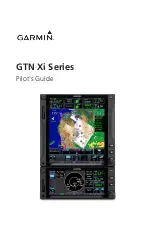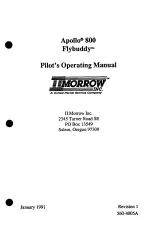
DSC Page
The DSC page of the Main Menu allows you to control and set up
the Digital Selective Calling (DSC) features on the GPSMAP 296.
DSC uses marine VHF radio and GPS technologies to transmit
and receive location information. The chartplotter repeats the call
properties received from the VHF radio on the chartplotter. The
GPSMAP 296 requires input from a DSC enabled VHF radio to
show position, and to sound/show alerts from a Distress Call or
Position Report. Conversely, the VHF radio requires input from a
GPS to transmit position coordinates for a Distress Call or Position
Report. For connection information, refer to
on
.
An emergency DSC Distress Call allows a vessel in trouble to
transmit a substantial amount of information in a single transmission
or call, without the need for voice communication. When any
nearby rescuer receives the DSC signal, an alarm sounds and they
immediately receive the location of the caller. The rescuer can then
choose to navigate to the caller’s location to assist, or forward the
call on to the Coast Guard. When the Coast Guard receives the call,
they can immediately access the caller’s information (such as who
they are and the type of vessel) in their database while they are in
transit to the caller’s location.
A non-emergency DSC Position Report allows mariners to exchange
and show the positions of one another. When a DSC position is
received, the mariner can choose to create a waypoint or to show the
received location on an electronic map.
Anytime a vessel receives a DSC call, they can store and quickly
navigate to that location using a Go To. This makes DSC a time
saver, especially in an emergency situation. In order to use DSC,
users must first register their VHF radio with the FCC and receive a
Maritime Mobile Service Identity (MMSI) number.
For more information about Digital Selective Calling and Maritime
Mobile Service Identity (MMSI) numbers, refer to
page 143
DSC Page
GPSMAP 296 Pilot’s Guide
91
M
ARINE
M
ODE
P
AGES
AND
F
EATURES
>
DSC















































